The Complete Guide to Safe & Compliant Bulk Packaging for Hazardous Materials


UN Certified FIBCs: The Complete Guide to Safe & Compliant Bulk Packaging for Hazardous Materials
Transporting hazardous materials requires packaging that meets the highest global safety standards. UN Certified FIBC bags are engineered, tested, and approved to handle dangerous goods across international supply chains without risk of leakage, failure, or contamination.
At Flextons Packaging, we design and supply UN-compliant bulk bags that meet the United Nations Recommendations on the Transport of Dangerous Goods (UN Orange Book), ensuring safety, traceability, and reliability for every shipment.
What Are UN Certified FIBC Bags?
A UN Certified FIBC (Flexible Intermediate Bulk Container) is a bulk bag that has passed mandatory UN testing for safe transport of hazardous materials.
These bags meet strict requirements for:
Structural strength
Impact resistance
Stability during stacking and lifting
Chemical compatibility
Leakage and retention
UN FIBCs are essential for industries such as chemicals, minerals, pharma intermediates, agriculture chemicals, and hazardous waste handling.
UN Hazard Classes Suitable for FIBC Bags
UN Certified bags are approved for specific classes of dangerous goods, including:
Class 4.1 – Flammable solids
Class 4.2 – Spontaneously combustible materials
Class 4.3 – Dangerous when wet
Class 5.1 – Oxidizing substances
Class 5.2 – Organic peroxides
Class 6.1 – Toxic substances
Class 8 – Corrosive substances
Class 9 – Miscellaneous hazardous materials
These classifications determine the design, materials, testing level, and packaging group required for compliance.
UN Packing Groups: I, II, and III (X, Y, Z Ratings)
Hazardous goods are divided into three Packing Groups, based on the danger level:
Degree of DangerPacking GroupUN SymbolMax Volume for FIBCHighIX1.5 m³MediumIIY3.0 m³LowIIIZ3.0 m³
✔ Packing Group I (X-rated bags)
Used for the highest-risk materials, requiring the strongest FIBC performance level.
✔ Packing Group II (Y-rated)
For moderately hazardous products.
✔ Packing Group III (Z-rated)
For lower-risk materials.
Flextons Packaging supplies UN FIBCs across all three packing groups based on material classification and customer safety requirements.
UN FIBC Construction Types Explained
The UN Orange Book defines standardized construction codes for FIBCs:
13H1 – Woven PP fabric, uncoated
13H2 – Woven PP fabric, coated
13H3 – Uncoated fabric + inner liner
13H4 – Coated fabric + inner liner
We engineer each type with optimized fabric strength, seam efficiency, and custom liners depending on your hazard class and product density.
UN Mandatory Testing Procedures for Certified FIBCs
Each UN bag must undergo and pass all of the following tests:
1. Top Lift Test (6:1 or 8:1 safety factor)
Ensures the bag maintains structural integrity when lifted under overload.
2. Drop Test
Simulates accidental falls from specific heights.
3. Topple Test
Checks stability when the filled bag is pushed over.
4. Righting Test
Lifts the bag from a horizontal to vertical position to ensure no damage occurs.
5. Stack Test
A 24-hour compression test that checks long-term stacking strength.
6. Tear / Puncture Test
Measures tear propagation when slashed or punctured.
7. Vibration Test
A one-hour shaking cycle ensuring zero leakage.
These tests verify that UN Certified FIBCs can handle real-world hazards during transport, storage, and handling.
How to Read a UN Marking on an FIBC Bag
A typical UN marking may look like this:
13H2/X/06.25/IND/FTX01/3500/1500
This includes:
13H2 → FIBC construction type
X → Packing Group I certification
06.25 → Month & year manufactured
IND → Country of certification
FTX01 → Manufacturer’s approval code
3500 → Stacking test load (kg)
1500 → Maximum permissible gross mass
This system ensures complete traceability and compliance, especially during audits and cross-country transport.
Why Choose Flextons Packaging for UN Certified FIBCs?
✔ Fully Compliant With Global Standards
We follow:
UN Orange Book
ISO 21898
ISO 9001:2015
Customer-specific audit requirements
✔ Superior Material Engineering
High-tenacity polypropylene fabric, UV protection, precision sewing, and controlled coating thickness ensure safe handling.
✔ Digital QA & Traceability
Every batch undergoes:
Fabric tensile testing
Seam strength checks
SWL verification
Visual inspections
Documentation storage
QR codes or RFID can also be added for enhanced tracking (optional).
✔ Custom-Built for Your Product
We design UN bags based on:
Hazard classification
Bulk density
Transport conditions
Filling/discharge requirements
Supply-chain handling
Industries That Depend on UN Certified Bulk Bags
Chemical processing
Petrochemicals
Agrochemicals
Hazardous waste management
Mining & minerals
Battery / EV material handling
Pharmaceutical intermediates
UN FIBCs ensure safe, compliant movement of materials in these sensitive sectors.
Conclusion
UN Certified FIBCs are a critical part of global hazardous-goods logistics. They deliver unmatched safety, structural integrity, and regulatory compliance.
At Flextons Packaging, we manufacture high-performance UN Approved FIBC bags across all packing groups — X, Y, and Z — engineered to protect people, products, and the environment through every stage of transport.


